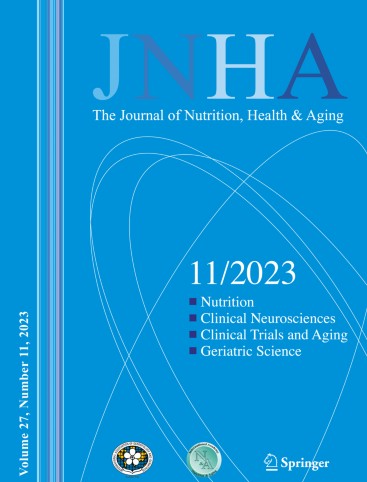Hospital frailty risk score in predicting outcomes after simultaneous colon and liver resection for colorectal cancer liver metastasis in older adults: Evidence from the Nationwide Inpatient Sample 2015–2018
IF 4
3区 医学
Q1 GERIATRICS & GERONTOLOGY
引用次数: 0
Abstract
Objectives
This study investigated the impact of clinical frailty on short-term outcomes of simultaneous colorectal cancer (CRC) and colorectal cancer liver metastasis (CRLM) resections.
Setting and participants
Data of older patients ≥ 60 years old undergoing simultaneous CRC/CRLM resections between 2005 and 2018 were identified in the United States (US) Nationwide Inpatient Sample (NIS) database.
Methods
Frailty was determined using the Hospital Frailty Risk Score (HFRS) according to the International Classification of Diseases Ninth and Tenth (ICD-9 and ICD-10) codes. Study outcomes included mortality, prolonged hospital stay (LOS), non-routine discharge, and complications.
Results
Data of 4514 patients were analyzed. Frailty was significantly associated with increased risks of in-hospital mortality (adjusted odds ratio [aOR] = 3.65, 95% confidence interval [CI]: 2.52, 5.28), non-routine discharge (aOR = 2.44, 95% CI: 2.08, 2.87), prolonged LOS (aOR = 3.07, 95% CI: 2.60, 3.61), overall complications (aOR = 3.47, 95% CI: 3.03, 3.97), sepsis (aOR = 13.73, 95% CI: 9.76, 19.31), respiratory failure (aOR = 4.99, 95% CI: 3.80, 6.57), acute kidney injury (AKI) (aOR = 6.42, 95% CI: 4.83, 8.52), and acute liver failure (aOR = 2.10, 95% CI: 1.38, 3.21), as well as 32.69 thousand USD higher total hospital costs (95% CI: 28.41, 36.97) than no frailty. Incorporating frailty with traditional demographic and clinical risk factors improved in-hospital mortality prediction (area under ROC curve [AUC]: 0.765 to 0.799).
Conclusions
In older patients aged ≥ 60 years undergoing simultaneous CRC and CRLM resection, HFRS-defined frailty is a significant predictor of adverse in-hospital outcomes. The addition of HFRS-defined frailty to demographic and clinical variables in predictive models improved the AUC for mortality prediction. Incorporating frailty assessment into the preoperative risk stratification and decision-making process for these patients may support surgeons in delivering more personalized and effective care.
医院虚弱风险评分预测老年人结肠和肝脏同时切除结直肠癌肝转移后的预后:来自2015-2018年全国住院患者样本的证据
目的探讨临床虚弱对同时行结直肠癌(CRC)和结直肠癌肝转移(CRLM)切除术患者短期预后的影响。背景和参与者在美国(US)全国住院患者样本(NIS)数据库中确定了2005年至2018年期间同时接受CRC/CRLM切除术的≥60岁老年患者的数据。方法按照国际疾病分类第九和第十(ICD-9和ICD-10)编码,采用医院虚弱风险评分(HFRS)测定患者的虚弱程度。研究结果包括死亡率、延长住院时间(LOS)、非常规出院和并发症。结果共分析4514例患者资料。虚弱与院内死亡风险增加(调整优势比[aOR] = 3.65, 95%可信区间[CI]: 2.52, 5.28)、非常规出院(aOR = 2.44, 95% CI: 2.08, 2.87)、LOS延长(aOR = 3.07, 95% CI: 2.60, 3.61)、总并发症(aOR = 3.47, 95% CI: 3.03, 3.97)、败血症(aOR = 13.73, 95% CI: 9.76, 19.31)、呼吸衰竭(aOR = 4.99, 95% CI: 3.80, 6.57)、急性肾损伤(aOR = 6.42, 95% CI:4.83, 8.52),急性肝衰竭(aOR = 2.10, 95% CI: 1.38, 3.21),总住院费用比无虚弱者高32.69万美元(95% CI: 28.41, 36.97)。将虚弱与传统的人口学和临床危险因素结合,可改善住院死亡率预测(ROC曲线下面积[AUC]: 0.765 ~ 0.799)。结论在年龄≥60岁同时行结直肠癌和CRLM切除术的老年患者中,hfrs定义的虚弱是不良住院预后的重要预测因素。在预测模型中,将hfrs定义的脆弱性加入人口统计学和临床变量,提高了死亡率预测的AUC。将衰弱评估纳入这些患者的术前风险分层和决策过程可以帮助外科医生提供更个性化和有效的护理。
本文章由计算机程序翻译,如有差异,请以英文原文为准。
求助全文
约1分钟内获得全文
求助全文
来源期刊
CiteScore
7.80
自引率
3.40%
发文量
136
审稿时长
4-8 weeks
期刊介绍:
There is increasing scientific and clinical interest in the interactions of nutrition and health as part of the aging process. This interest is due to the important role that nutrition plays throughout the life span. This role affects the growth and development of the body during childhood, affects the risk of acute and chronic diseases, the maintenance of physiological processes and the biological process of aging. A major aim of "The Journal of Nutrition, Health & Aging" is to contribute to the improvement of knowledge regarding the relationships between nutrition and the aging process from birth to old age.

 求助内容:
求助内容: 应助结果提醒方式:
应助结果提醒方式:


